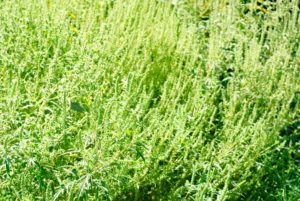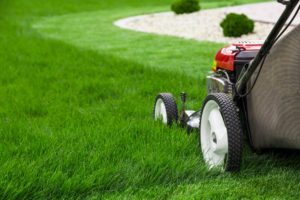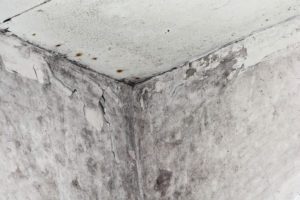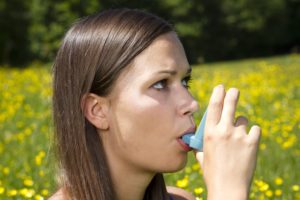Effective Ways to Stop Springtime Allergies
Spring is in the air.
With the return of the robins, rain showers, and gardens so too comes the dread of seasonal allergies.
For so many Americans, the annual struggle searching for allergy cures and relief that actually prove effective is all too real and can prevent them from enjoying the outdoors as well as interacting with friends and family members.
As with any great battle it is important to know your enemy. Here are the springtime allergies that you need to be on guard against.

ragweed bushes background
RAGWEED
WHAT TO LOOK FOR: A pervasive weed that can be found throughout all of North America, a single ragweed plant can produce over a billion pollen grains in a season. It should come as little surprise to find ragweed allergies can be found in as many as one in five people in America.
WHAT IT DOES: Due to the type of symptoms sufferers report, including sneezing, red and itchy eyes, and nasal congestion, ragweed effects are often considered “hay fever”.
WHAT YOU CAN DO: Wash your hair and eyelashes after spending time outdoors to prevent the pollen from hanging on for a free ride. Also, be sure to do the same to your clothes. When you’re washing them be sure to machine dry them rather than line dry where they could accumulate even more pollen. Keep an eye on the daily pollen index. If it is a high level day, consider staying indoors between 10am and 4pm when pollen counts are at their highest.
GRASS
WHAT TO LOOK FOR: There are literally thousands of species of grass in North America and to the untrained eye many will be indistinguishable. While only a handful can cause serious allergic reactions, those that do can prove debilitating.
 WHAT YOU CAN DO: People with grass allergies may want to consider wearing a mask while performing yard work, specifically mowing the lawn. Taking it a step further, consider replacing your grass lawn with a
WHAT YOU CAN DO: People with grass allergies may want to consider wearing a mask while performing yard work, specifically mowing the lawn. Taking it a step further, consider replacing your grass lawn with a
tailored landscaping that instead relies on stone, moss, sand, mulch, shrubs, ivy, etc.
Here are some of the top grasses known to cause allergic reactions.
- Bermuda
- Johnson
- Kentucky Blue
- Orchard
- Rye
- Sweet Vernal
- Timothy
MOLD

Mold in a edge of a room
WHAT TO LOOK FOR: During the winter months many forms of mold remain dormant waiting for warmer weather to reawaken. Once temperatures rise and the indoor humidity reaches over fifty percent, watch out – that’s prime breeding grounds for molds that can see rampant spread and proliferation over a single night.
Often resembling foul-smelling streaks and spotted patches, these molds can vary in color from black, gray, white, and green to bright blue or pink.
WHAT IT DOES: With symptoms including itchy eyes, sneezing, and wheezing you can understand why many may, at first, assume their allergic reactions to be little more than a summer cold. This misdiagnosis can prove dangerous as severe mold infestations, if left untreated, can cause toxic, even life-threatening conditions.
WHAT YOU CAN DO: Keep your dehumidifier running in any potentially damp areas of your home and take care of any leaky pipes to cut the potential for mold growth. Not limited to basements, bathrooms are also susceptible to mold growth. So be sure to run your bathroom exhaust fan while taking a shower or bath to cut down on humidity, as well as clean the tub and sink with a diluted bleach mix.
ASTHMA

Young girl with asthma inhaler
WHAT TO LOOK FOR: Asthma affects one of out of every thirteen
Americans, with allergy-induced asthma serving as the most
commonly diagnosed form. While not an allergen in its own right,
asthma can be triggered by the same substances that incite allergic
reactions like dander, pollen, mold, and grasses.
WHAT IT DOES: Differing from the watering eyes and congestion
that hay fever induces, asthma sufferers often report respiratory
issues including tightness of the chest, trouble breathing,
and coughing fits.
WHAT YOU CAN DO: Because so many of the inciting factors that
cause asthmatic reactions are shared with allergy sufferers, many of
the preventative measures are similar, including, keeping an eye on
the pollen index, avoiding outdoor exposure during peak pollen times,
and washing clothes and hair after spending time outside.
CAN ANYTHING ACTUALLY CURE SPRINGTIME ALLERGIES?
Believe it or not, yes, there is!
While washing your clothes and keeping your basement dry are all effective preventative measures to limit allergic reactions, they do nothing to treat the allergies themselves. Being aware of the pollen index and limiting your time outside can limit allergen exposure, but at the cost of missing out on times spent with friends and family.
That is why Dr. G is so proud to feature a safe and effective way to not only stop the symptoms of allergies but to actually eliminate them. Sublingual immunotherapy (SLIT) drops, more commonly known as allergy drops, are now available and have been proven to be effective in both the treatment and curing of allergies, including some of springtime’s main offenders.
Call our office at 440-530-9316 to schedule an appointment with Dr. G to learn more!
